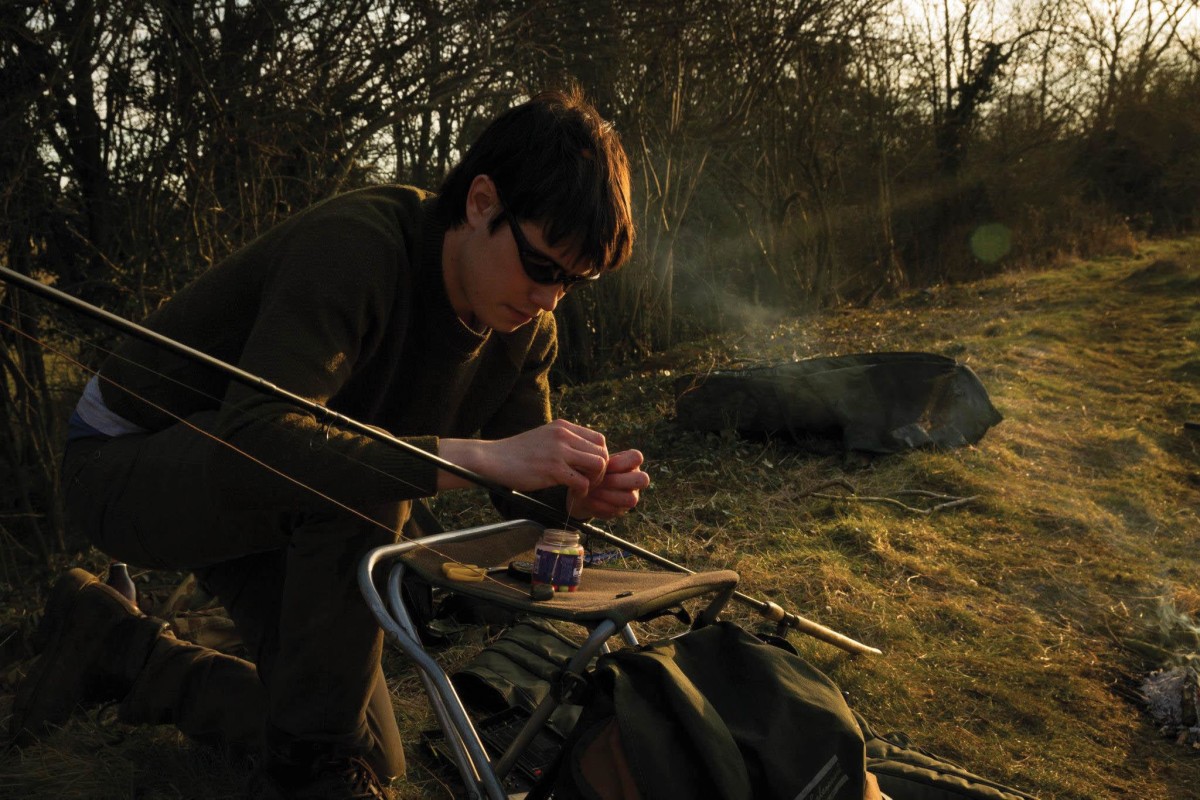
Rig Evolution: Then and Now
He may not be long in the tooth, but he keeps good company and has seen a few set-ups come and go. Jack Reid looks back and gives us his thoughts on a variety of terminal arrangements…
When I was asked to write this piece, I had to look back through my old photos to remind myself a little of what I used in the early days of my fishing, through to 2022. It was a right trip down memory lane. The cringeworthy catch shots, the likes of which we all took when we started out, were a sight to behold, as were images of the huge gas bottles and camping stoves I’d lug down to the lake. I am well aware, that at the age of 34, I can provide you, the reader, with only so much wisdom. Whilst I have caught my fair share of carp, and on my own terms, ultimately, I have not caught the biggest fish in the land, nor do I have a fishing CV that spreads over four decades or more like some contributors. I might, however, make up for all this having spent many hours working with some of the most influential and skilled anglers in the game. I suppose, therefore, that I have noted and adopted trends from their technical approaches along the way.
Rigs are a strange one, because they conjure up something passionate in anglers. The topic, however, also attracts a lot of fury. Undoubtedly, there is apparently conflicting information out there. The view of one angler will often differ to that of the next, and that will always be the case. One thing’s for sure, though, no matter how stubborn an angler is, or how much he or she believes that they have found their perfect fishing tools, they will always have it in their back of their head that there may be something slightly better and more efficient out there, to hook and successfully land their quarry. The journey rarely ends.
Early Days: The Method
How early is early? Amusingly, when I started fishing lakes in my area of Oxfordshire, it was to supplement my newfound love of sea fishing following a holiday in Cornwall. Within six months, I had discovered, and seemed to dominate everywhere I went with the Method feeder. I genuinely thought that I had completed my inland-fishing journey. This feeling was, of course, short-lived, and when I fished my first gravel pit, albeit a small one, the tip never swung round because a carp was on the other end, only bream. Perhaps the approach was too obvious for those ‘proper’ carp?
One day, I swapped my short feeder rig for a foot-long mono set-up and baited it with two tigers. Finally, away went the tip, as I then landed the dumbest carp in the pit. Clearly, the carp had been staying well away from the pile of bait presented via the Method feeder. I then strayed from the Method feeder, having been sucked into carp fishing.
Looking back at my early carp rigs, in all honesty, they weren’t half bad. Typically, I’d use bottom set-ups for tigers, or Snowman Rigs for boilies. I’d use either a coated braid, or a Combi Rig with fluorocarbon and braid, which in retrospect was fairly laughable, as I wasn’t fishing super-clear venues, the sort where fluorocarbon comes into its own—tying that tricky Albright knot to join the two materials was probably a really unnecessary use of my time.
I used PVA mesh regularly when I first got into carp fishing, and I rarely cast out anything without a one- or two-inch stick fed down the rig. I generally fished bottom baits to match. Typically, when you researched bottom-bait rigs, you often found what’s referred to today as the Flipper Rig. Silicone tubing trapped the Hair, and you could adjust the set-up to match the buoyancy of your bait. If I wanted to fish a pop-up, then I could pinch shot on the rig instead of using putty, and could adjust the position of the silicone on the bend.
My main fishing influences were Terry Hearn, Simon Scott and Shaun Harrison, so the technical advice available, along with that regarding watercraft, was pretty solid.
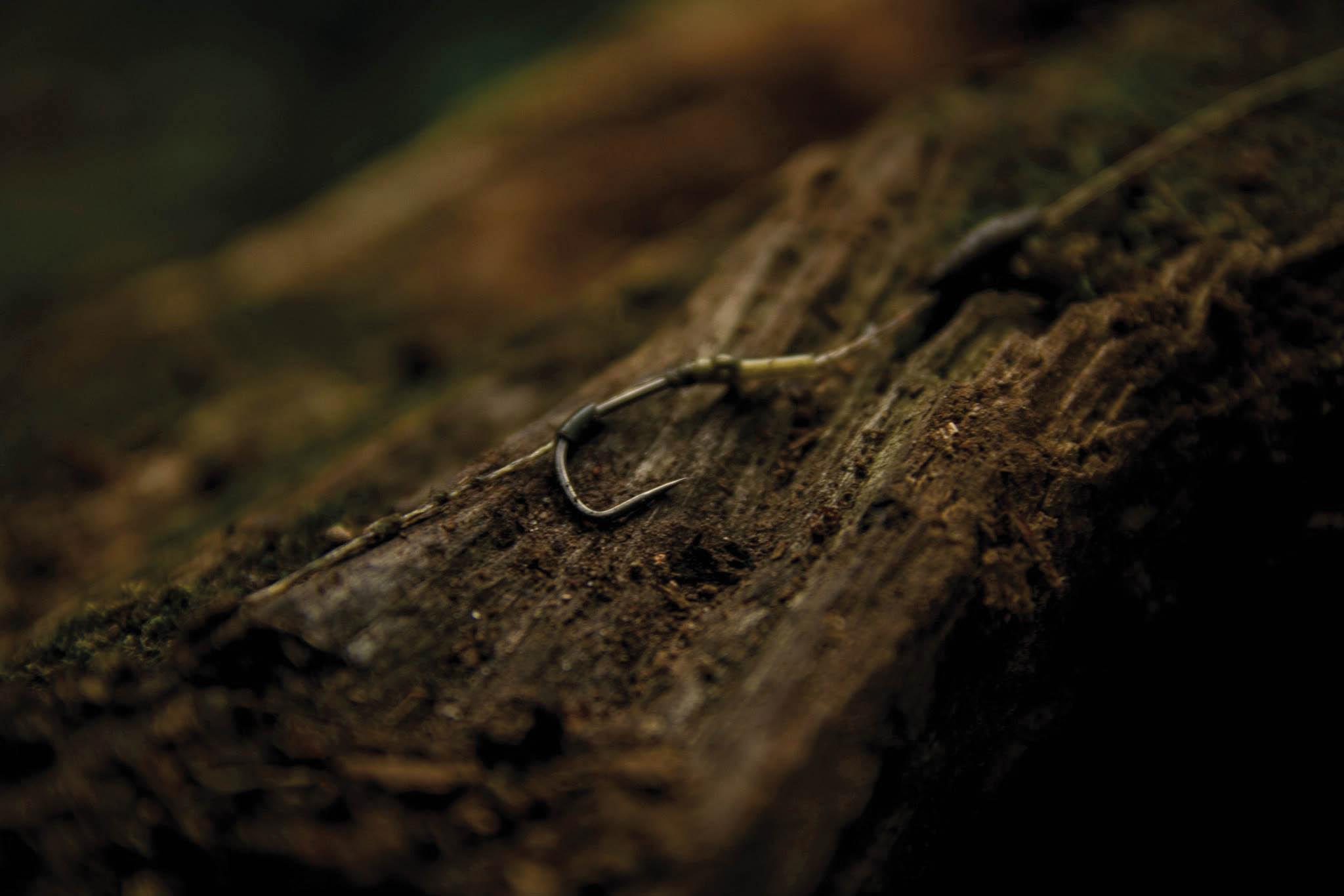
The KD Rig Phase
In the early 2010s, I saw Tom Dove and others use the KD Rig with critically balanced baits. The arrangement was ultra-aggressive in nature, the hook sitting out from the braid due to the pattern of whipping down the shank. The Hair kicked out after only two turns before the whipping continued down. Whilst the rig was certainly ugly, it drew my attention, and for a while became my adopted approach on most waters I visited. I fished with little size 8 curve hooks or wide gapes. The set-up just seemed to nail them and I don’t recall losing many fish on it.
Give or take the odd tweak, my presentations continued to revolve around the above examples. The components may have changed, depending on what was in the shop, but the overall outline remained the same.
By the 2010s, fishing media was growing rapidly, more so come 2013/14, by which time I was really obsessed. For someone my age, I had held off getting a smartphone for a long time, but when I did finally acquire one, I was obviously exposed to content more regularly. For the first time in a while, I found myself copying a rig purely because of that stream of influence. It was a Combi-Rig–pop-up combination utilising a hook ring swivel that Gaz Fareham had publicised in either a video or magazine article that was becoming trendy. I was using pop-ups more and more, and the rig, with a curve shank hook and fluorocarbon-to-braid arrangement, was held down with just putty. The bait was mounted on via a hook ring swivel between a shrink tube aligner and a hook stop.
Looking back, I have no idea how pop-ups were held down by that little bit of putty. I think today, most pop-ups are hideously over-buoyant. Obviously we like longevity and pop-ups that remain buoyant, but it seems crazy that, in the age of metal-heavy rigs with size 4 hooks and the like, you often still have to use quite an amount of putty to hold them down, and this makes everything more clunky than it probably needs to be.
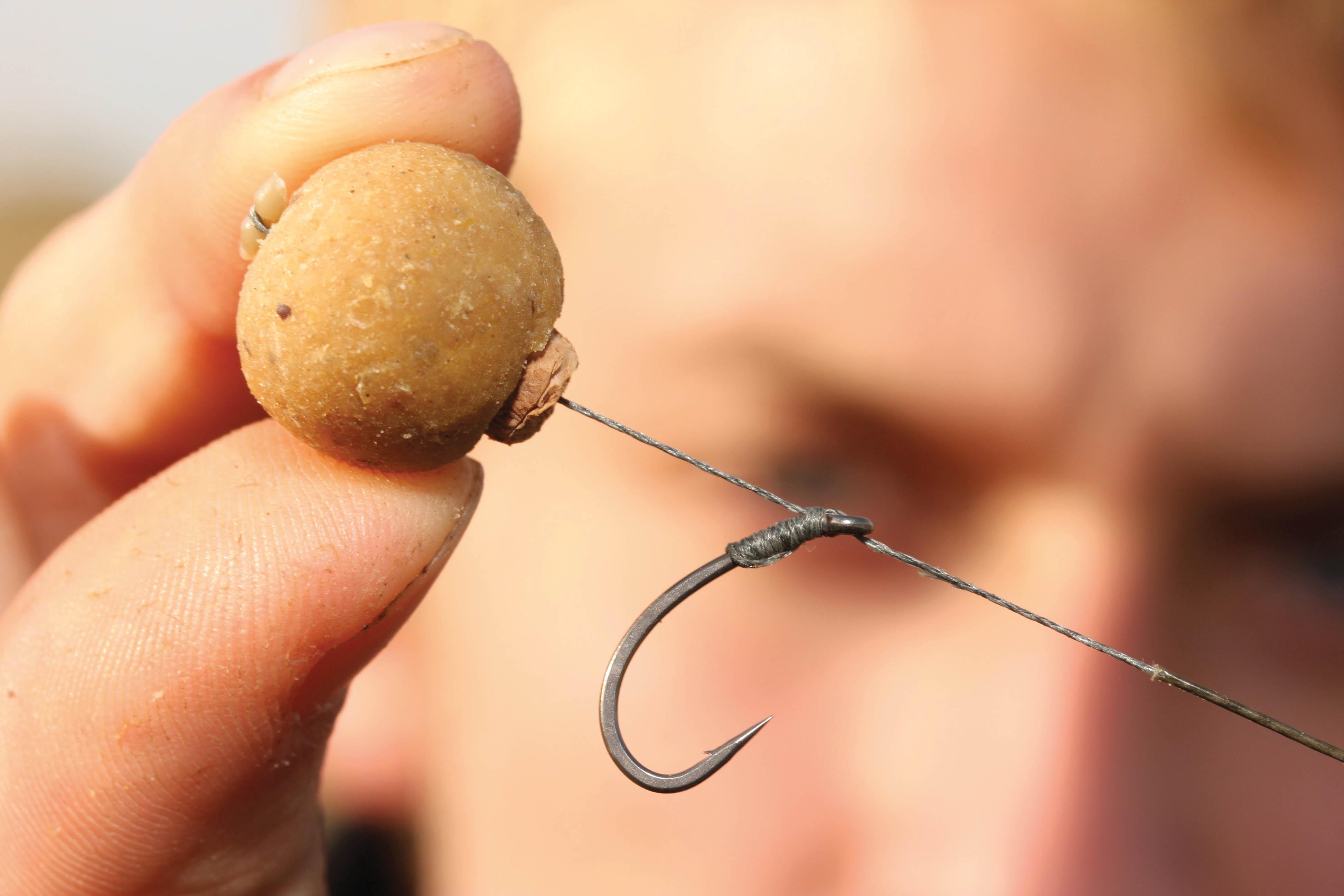
The Korda Days
Upon becoming a media producer for Korda and moving to Essex, I was obviously catapulted into the world of fishing, full-time. I was out of my own, semi-isolated fishing bubble that I’d been in most of my fishing days. Keep in mind, too, that I’d not even tied a Chod Rig at this time, and it was 2015! When filming features, I could be with Pecky one day and Ian Poole the next. In all my bank time, and when in the office, I would regularly be talking fishing, making fishing films or discussing fishing technicalities of one sort or another. I flip-flopped through a range of rig presentations, my choice depending on the water I was fishing. The IQ D-Rig was all the rage with many at Korda, although there was also, of course, plenty of variety. I’d largely stuck to my guns, though, until I was faced with my first, ultra-weedy water…
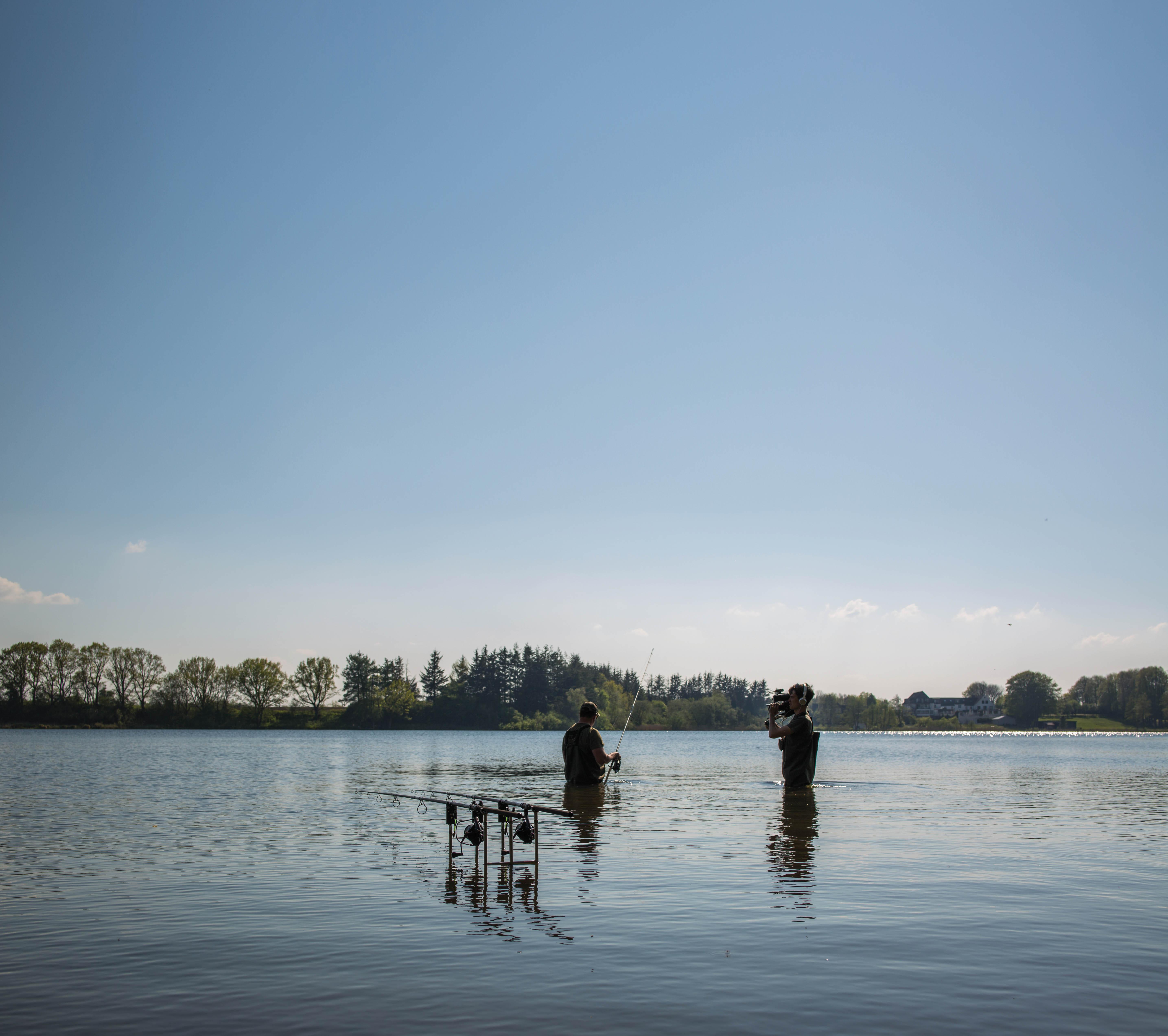
The Chod Rig
Having stumbled across Chelmsford Park Lake in Essex which, unlike before, now had what seemed to be a small number of carp in it, I faced my first, mega-clear and weedy venue. At the time it was like an aquarium, with a whole array of interesting weed types. Quite quickly, I realised that I’d be casting over weed almost wherever I fished—any presentation that wasn’t buried in a forest of cabbages was a result. After all my years of fishing, it was now time, finally, to try and tie a Chod Rig, and it wasn’t as painful as it looked.
Soon, I was really enjoying fishing the set-up. Using a tiny little size 8 Chod hook and a small pop-up, I set about working my way through the stock. I was sold, and until this day I am confident to deploy the Chod Rig, usually with a size 6 hook, over any lakebed I’m uncertain about, and I don’t feel as though I’m compromising anything in terms of hook-holds, although I’m aware that the lead takes a little longer to come into effect.
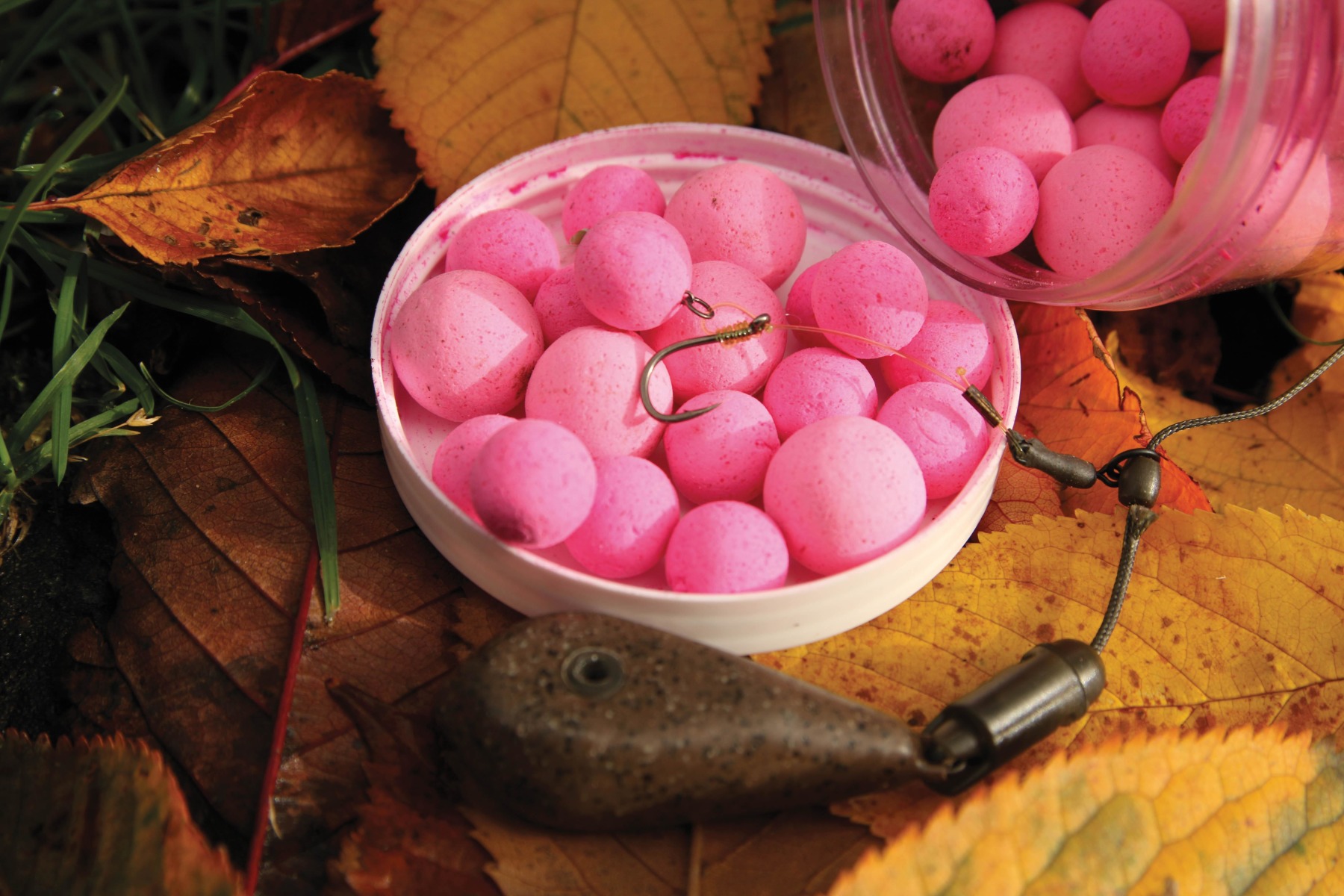
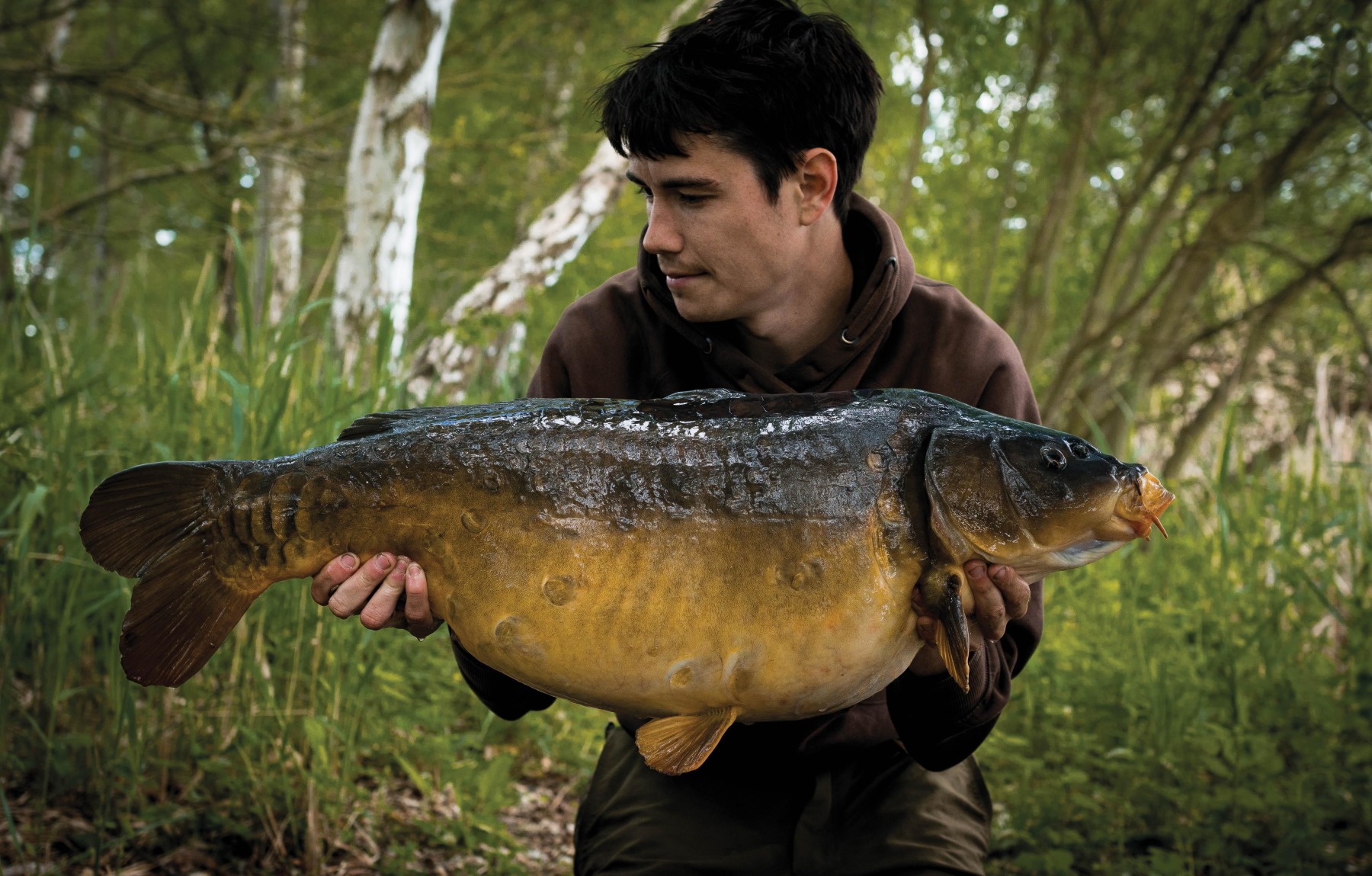
The Elliott Gray Rig vs Ronnies
When fishing over normal lakebeds during most of the years that followed, it was a constant back and forth between the Ronnie Rig and that now associated with Elliott Gray which incorporated the use of coated braid, a split shot to anchor the pop-up and a wide gape-style hook with a long line-aligner. It is a rig that goes back a long way, and one that isn’t too far removed from what I used to use. Elliott has stuck it out a long time with that rig, and most carp anglers know what you mean when you name it as such. It was a simple, classic set-up, and it performed exactly as you wanted a rig to.
There was one downside, however, and that was that it did not have a quick-change element with the hook. More and more in fishing, the ability to conveniently change hooks or boom sections has become a must. Around this time, the Ronnie/Spinner Rig exploded into mainstream carp fishing, seemingly ticking all the boxes given the quick-change arrangement at both ends. I was sold!
As with everything in fishing, there are a lot of variables. You could have the best rig in the world, but should you use it on a very difficult lake or in the colder months and then catch nothing, you could be fooled into thinking it wasn’t very effective.
I used the Ronnie at Silver End Pits in Essex, and having started during the colder months, I really struggled. Despite being advised that milk protein- and nut-based baits were by far the best there, I stuck to fishmeals, thinking that what I’d heard about bait preferences was a load of rubbish. Well, it wasn’t, and as I’d been doing pretty badly, I convinced myself that the Ronnie was too metal-heavy and had too many components, and that the pressured club fish had sussed me. This was a classic case of blaming a rig when another area of my approach was failing. I swapped my bait and the bites started to come at the same time I also swapped rigs. In my mind, the arms race, shall we say, had reached a conclusion, and for a good few years I stuck with the Elliott Gray-style set-up and the Chod Rig, using them both to great effect.
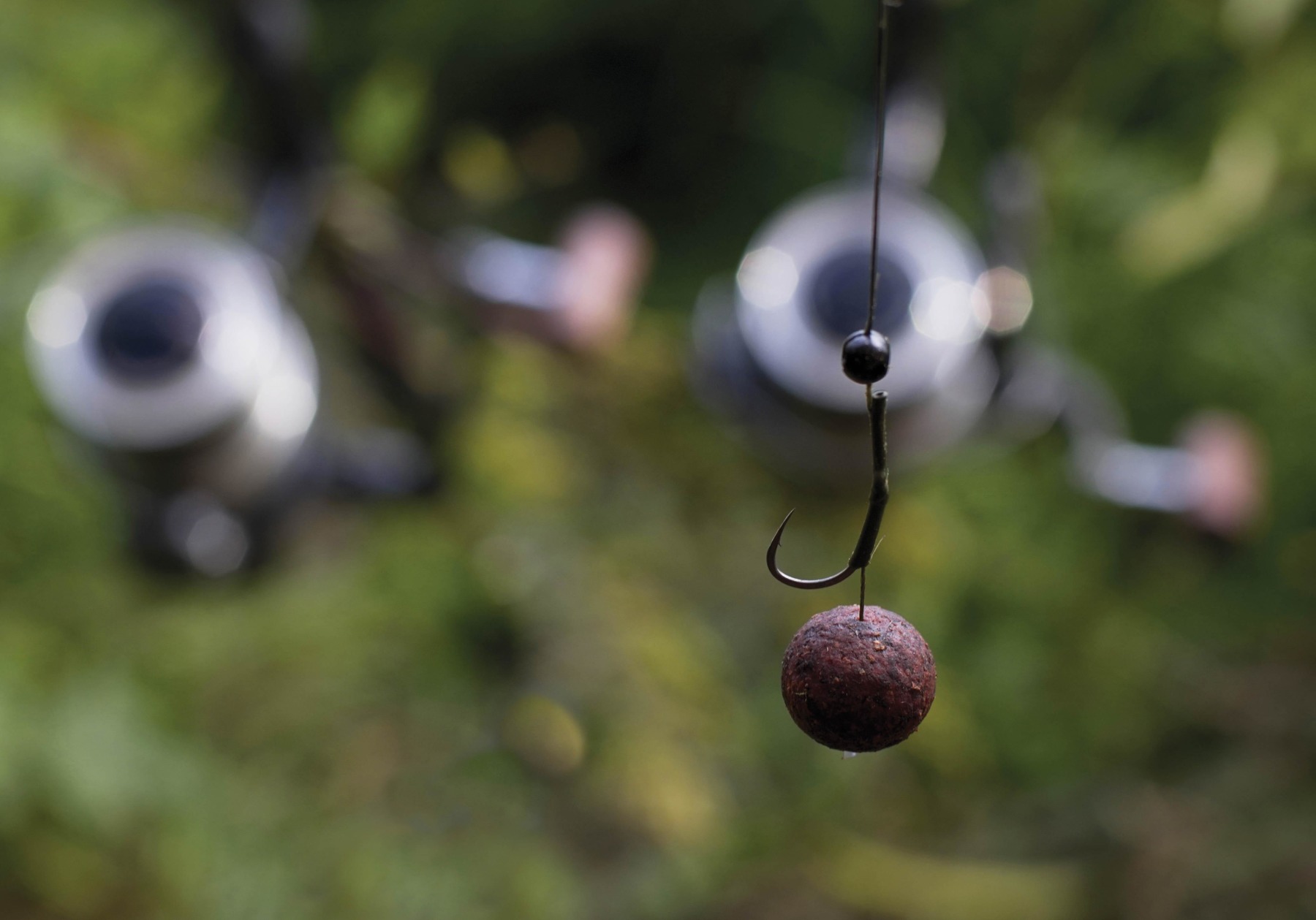
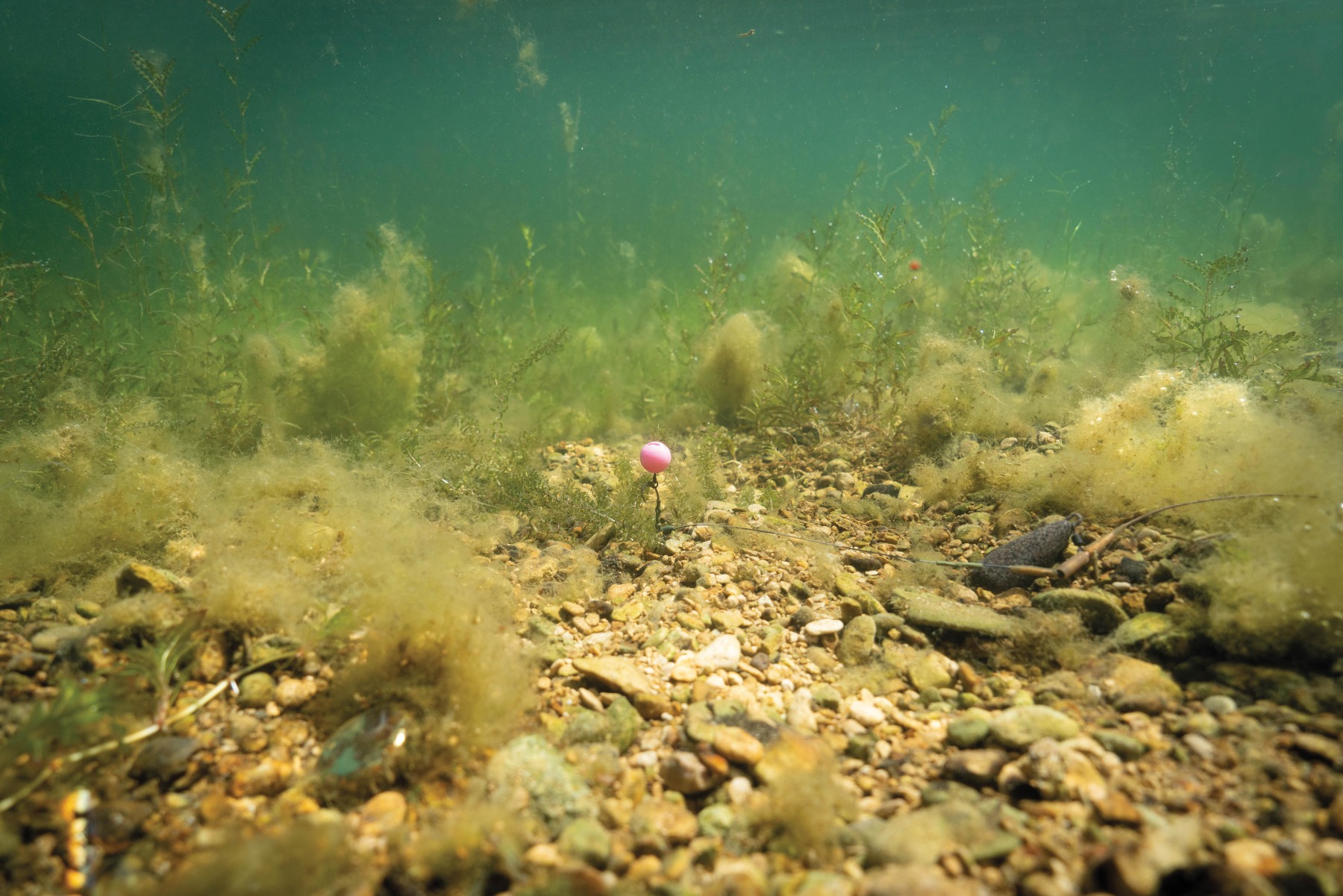
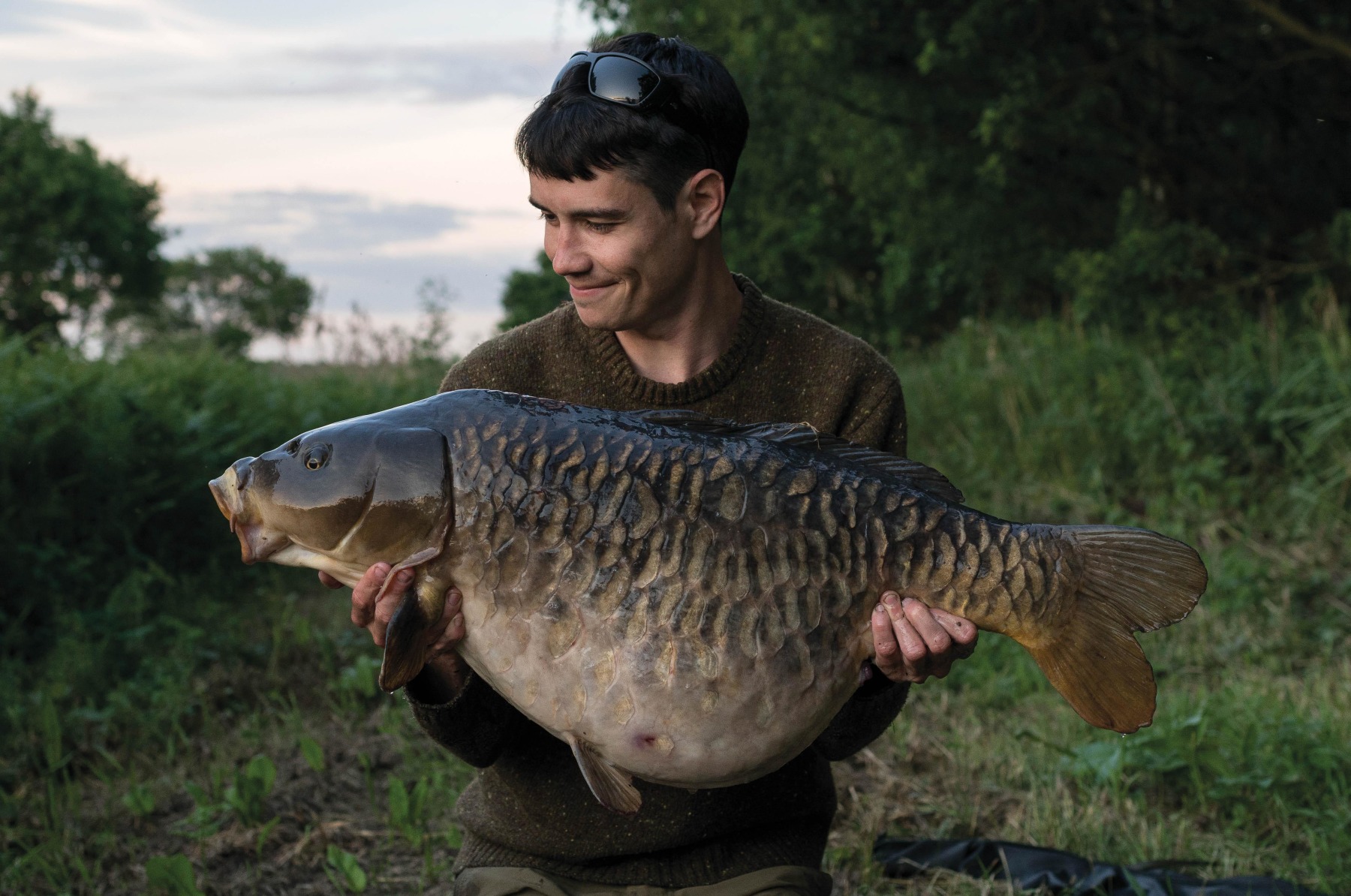
Working With Icons
As mentioned at the outset, I’m lucky enough to have a career in which I spend lots of time with very good anglers. Undoubtedly, their knowledge has rubbed off on me, and it has influenced decisions I’ve made regarding tackle. You can observe someone’s incredibly successful fishing and see which rig they are using. Are they, though, facing the same scenario that you might be? The fact that Terry Hearn has an immensely effective rig for a particular campaign, one fished, perhaps, at just a few yards, doesn’t mean I can expect to launch it into a 40-acre pit and expect the same outcomes.
Now, I am probably going to tread on some toes here, but I really feel like I am seeing some key trends with anglers I have worked with, and I have also seen improvements in my own fishing as a result. There will, of course, be cases where fantastic anglers do the complete opposite to what I’ve observed. That is part of the mystery of rigs. It’s also the reason some throw their hands up in the air and declare that it’s all complete bull!
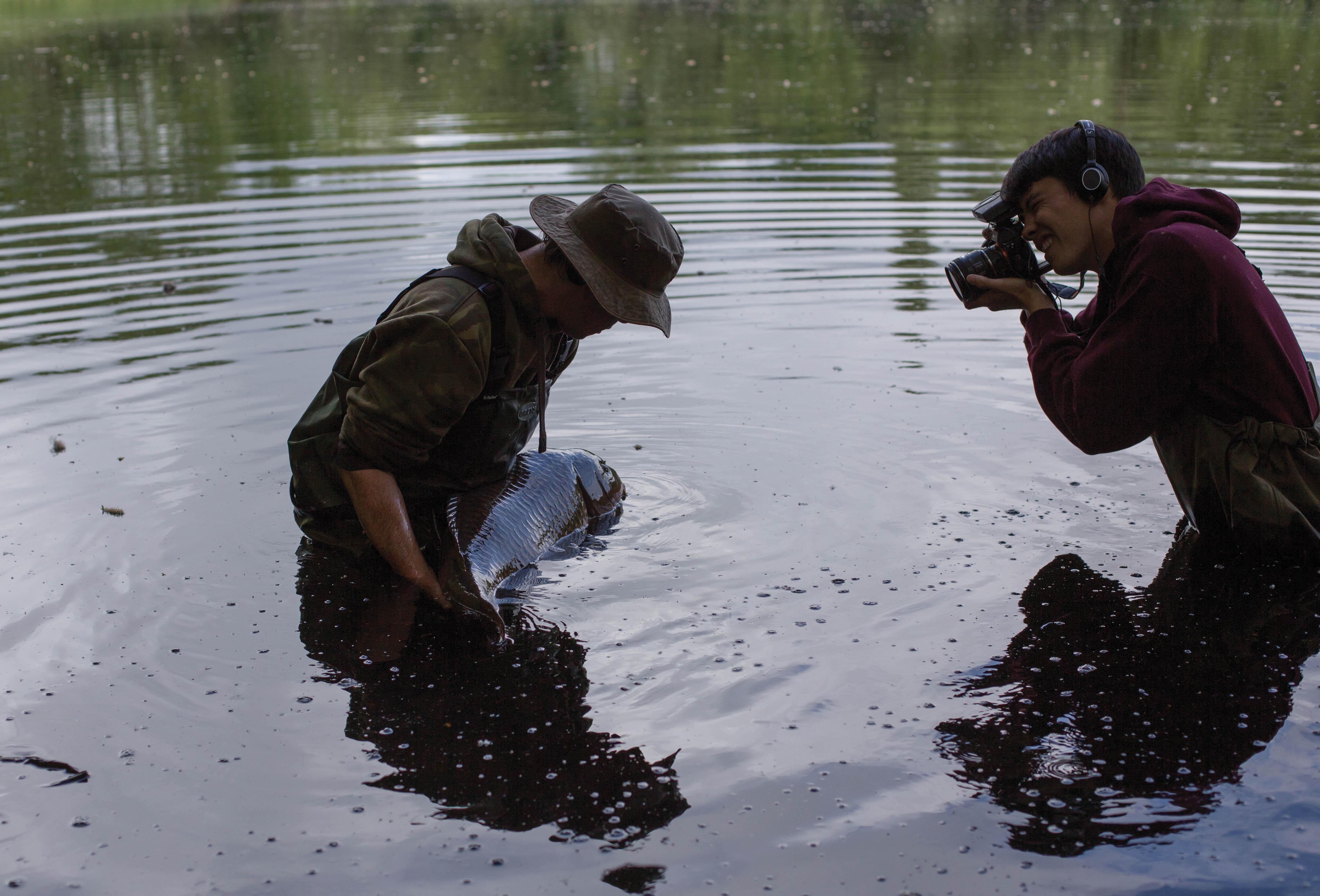
Bigger Isn’t Always Better—Hook-To-Landed Ratio
For me, the big questions don’t always relate as much to the rig itself, rather the hook size, its sharpness, and the nature of the lakebed you’re fishing over. Undeniably, anglers have used larger and larger hooks over the years, but why? It often makes sense that a larger hook is more likely to catch and grab them much better, but from very early on, I regularly saw smaller hooks catch plenty of fish. Also, their use didn’t result in losses. There are so many good rigs these days, that nearly all of them have an aggressive hooking aspect, so for me, it is all about the hook-to-landed ratio. Darrell Peck offers a case in point, and an appropriate anecdote comes to mind…
When I started at Korda, the Belgian episode of Masterclass 2 had just been filmed. This made waves at the time, as it was the first filmed by Elliott Gray and Richard Stewart, rather than by an expensive freelance television crew. Anglers themselves, they did so using their old and crusted DSLRs, and it looked and felt like a kind of fishing production most of us had not seen. Dan and Darrell hauled on the beautiful Belgian park lake, fishing from the bank after getting on the fish and flicking bright pop-ups to them. The set-up Darrell was using at the time was a sort of Stiff Hinge-style rig, made using coated braid with a break in the coating. Most importantly, it incorporated a tiny—by today’s standards—size 8 Chod hook. He caught huge fish, and he suffered, I believe, next to no losses. The hook-holds were clean with most of the pattern embedded in the fishes’ lips.
He used this set-up for quite some time, tweaking it when he went to different locations. I filmed with him and Dan in Germany for Masterclass 4. We were on the most incredible venue. Darrell was using little size 8s on Naked Chod Rigs, and he emptied the place. I absorbed this, and fished similarly myself before being swayed, increasing my hook size in the promise, perhaps, of more fish and fewer losses. In fact, apart from some extremely niche examples abroad, Darrell nearly always uses at most, a size 6, and when he has noticed losses, they’ve occurred when he used a size 4 on the same rig. I can’t speak for Darrell, but I’d say that he believes that a size 6, is pretty much optimal when considering hook-to-landed ratios.
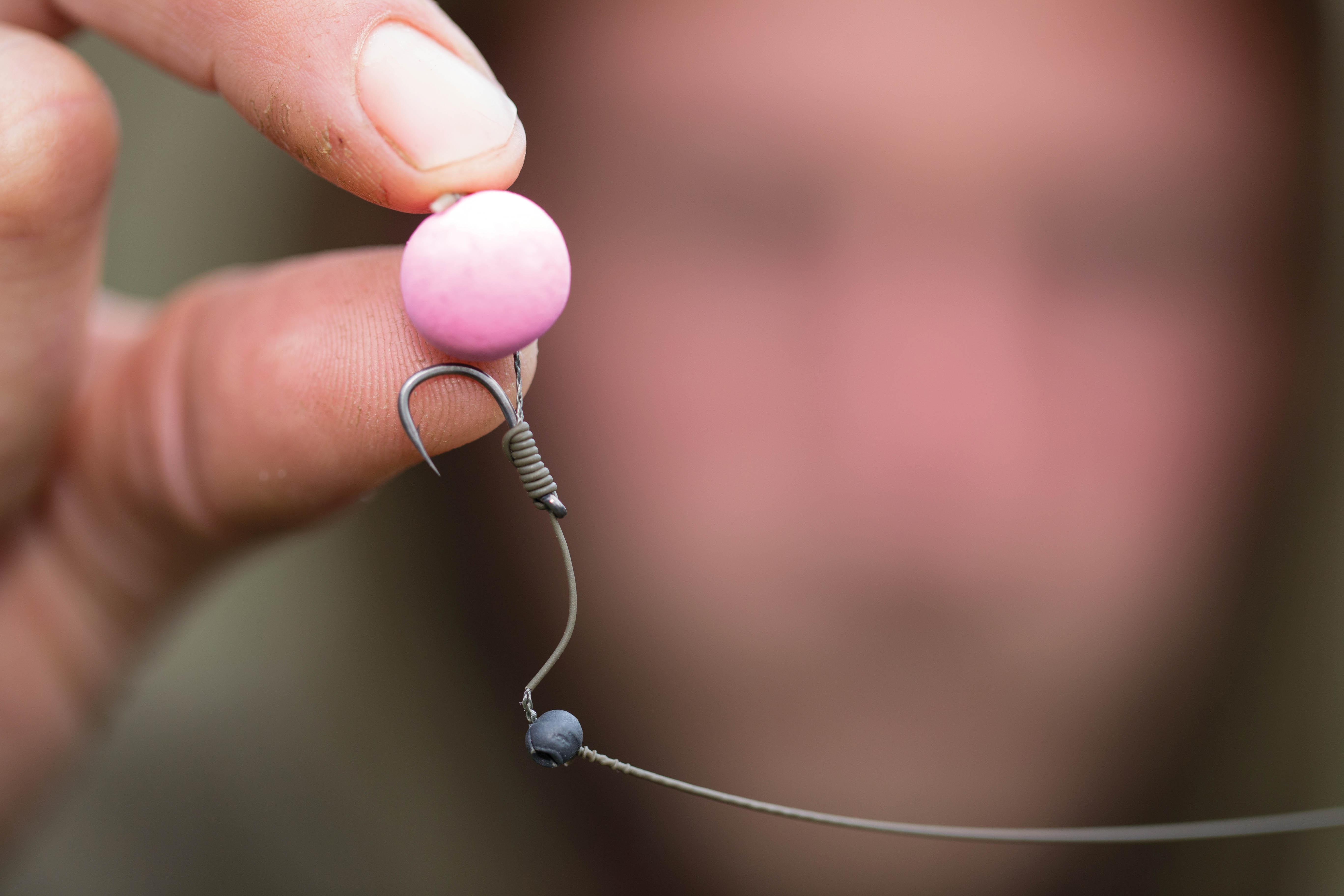
I have looked into who else has great hooked-to-landed ratios, and have tried to establish what preferred hook sizes are in order to reduce the number of times I might experience that heart-wrenching moment when one drops off.
In a world of big-carp anglers using larger and larger hooks, Terry Hearn caught the Parrot at 63lb on a size 5 Drennan Specialist Barbel Hook! This wasn’t because many of the old guard like to try and make life hard for themselves. They use hooks that are sharp, and those which produce secure hook-holds, even in old, bony mouths. They do the job and they embed.
Fairly recently, before finding my holy grail of set-ups, I found myself losing more fish than I would like, on a water that really tested a rig’s ability to hang on. They would simply drop off within 5 to 10 seconds of me lifting the rod, and it sent me spiralling. There was no doubt that the fish were wild as hell. They fought against me with every fibre of their soul, but the number of losses at one stage, was still astounding, and for every three I hooked, one dropped off. That figure, really, should be one in ten.
Everyone has had, at one point or another, a crisis in confidence. We start making changes in our approach, and that is exactly what I did. I used larger hooks and changed my rigs, but things just got worse. I’d somehow exacerbated the problem—it got to the point where I was nervous of getting a bite. I felt I needed to reset and find a much more reliable arrangement.
As I scanned the industry for information I came to speak with Kev Hewitt. I’d worked with Kev fair few times, and although he fishes for larger numbers of fish than I do, they are all carp at the end of the day, and his hooked-to-landed ratio was truly unbelievable. During a period of 18 months, he landed over 100 fish from Kingfisher Lake and Farriers without suffering a single hook-pull, and what was he using? A size 6 curve shank. The pattern was fairly small, too, and he used the barbless version! He was also on Ronnies… it seems you can’t escape the things!
I decided that if Kev could land that many fish on the bounce, in weed, and given that he doesn’t even sharpen his hooks, then surely his approach would be a good place to start in my search for salvation. I tied a pack of size 6 ESP Curve Shanx on Ronnie Rigs, and I couldn’t believe how small they looked. How were these going to stay in when size 4s or bigger were falling out? I had to try something, though, as these were fish you did not want to lose.
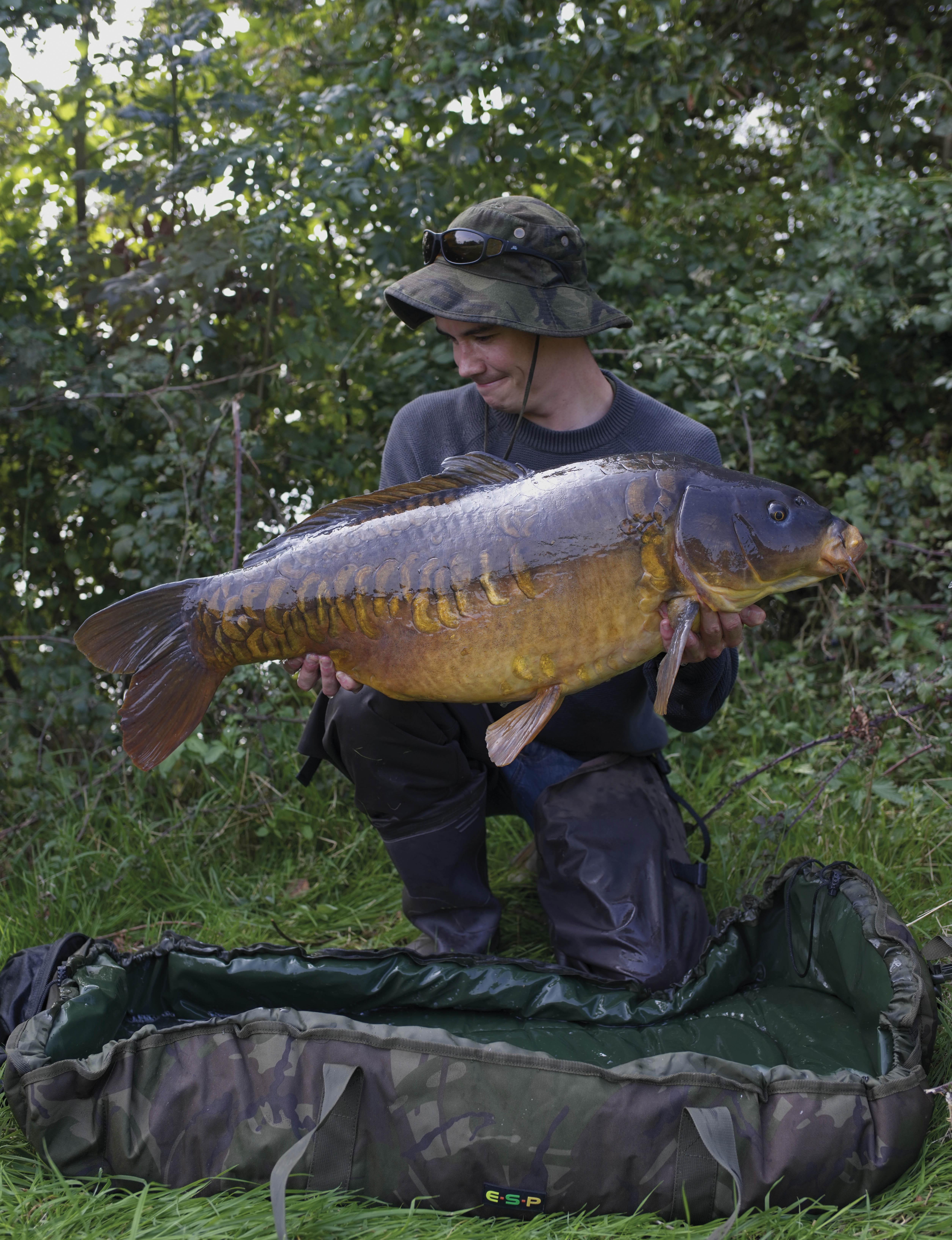
Needless to say, I have never looked back. I hooked and landed fish after fish on the Ronnies tied up with size 6 ESP Curve Shanx, and have continued to do so for the last two to three years. I now have huge confidence in my set-up, and when I pick up the rod, I am thinking about what the fish is going to look like, rather than wondering whether it’s going to drop off. I am well aware that the water itself has a poor hook-to-landed ratio. Whether soft or bony mouths are the cause, I don’t know. I have, though, seen the effectiveness of the set-up carry over to other venues since.
I believe when you look inside a fish’s mouth, you will find a canvas of flesh that our rig is destined for, but this canvas is not a limitless expanse of flesh. There are areas where the flesh goes down only so far before bone and other hard tissue is reached. Larger hooks require a fleshier, deeper area for them to penetrate effectively beyond the point. I believe hooks are the shape they are for a reason, and we need to utilise as much of the pattern as possible. That will make it harder for them to fall out, and less likely that they’ll bend or break, as the whole pattern is being used. A tiny thorn is harder to extract than a large one. If a large hook penetrates a mere centimetre before it meets resistance, you might be playing a fish with just the point beyond the barb, in its mouth. If that were a size 6 or 8, then 75 per cent of that entire hook might be buried, with it working to spread the pressure, and the twists and turns of the fish as it battles. I know which scenario I prefer of the two.
Large hooks that have been sharpened aggressively by hand take the degree of risk to another level and can cut out, especially when hook-holds are deep. When I swapped my approaches, but kept everything else the same, the difference was night and day!
So as of today, my holy grail rig is nothing cool, nothing under the radar and nothing contrarian. I use an ESP Curve Shanx in size 6—they’re perfectly sharp out of the packet and I don’t need to sharpen them myself—on a Ronnie Rig-style set-up with Tungsten Loaded X-Stiff or Semi Stiff as the boom, and that’s it. In my years of continued flip-flopping between the Elliott Gray-style–split-shot approach and the Ronnie, ultimately, the Ronnie won, mainly because of its quick-change element. This was further developed a few years ago when ESP released their Ronnie Clips and Tungsten Sleeves, and these made changing of the hook section of a Ronnie even quicker than it already was. They act essentially as a weighted gate on the end of the boom section, allowing you to swap made-up Ronnies and hinges at a moment’s notice, and they remove the need for putty.
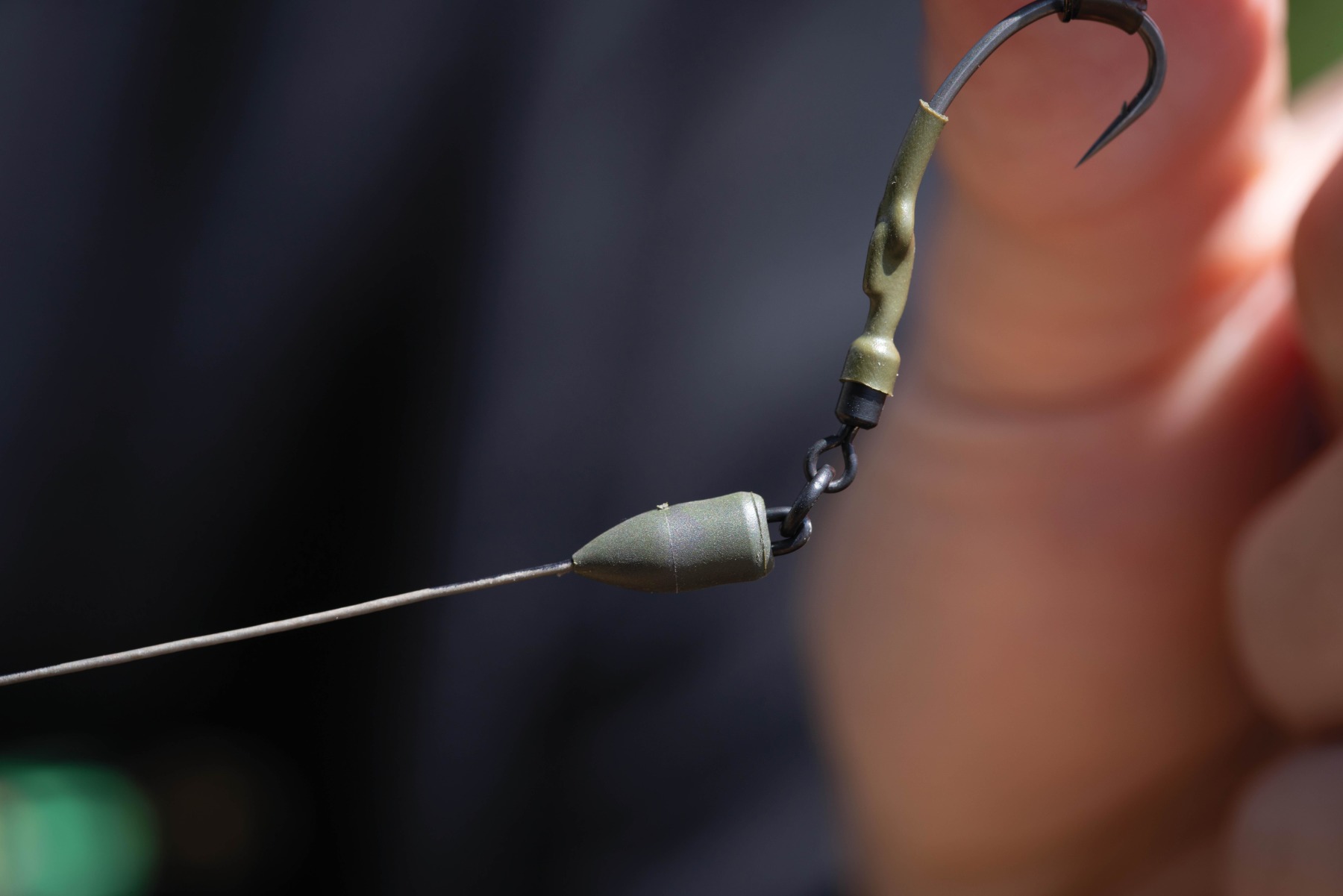
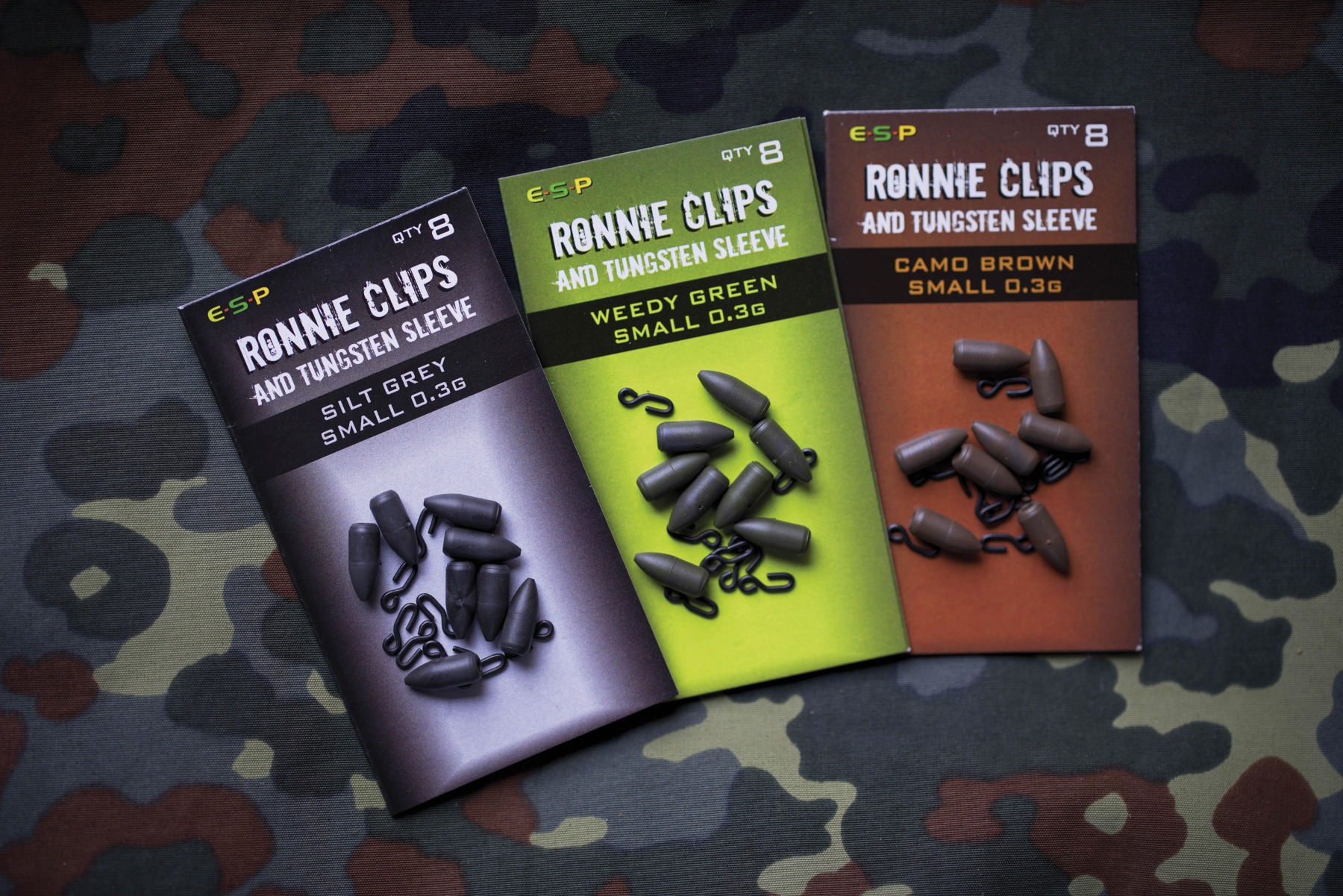
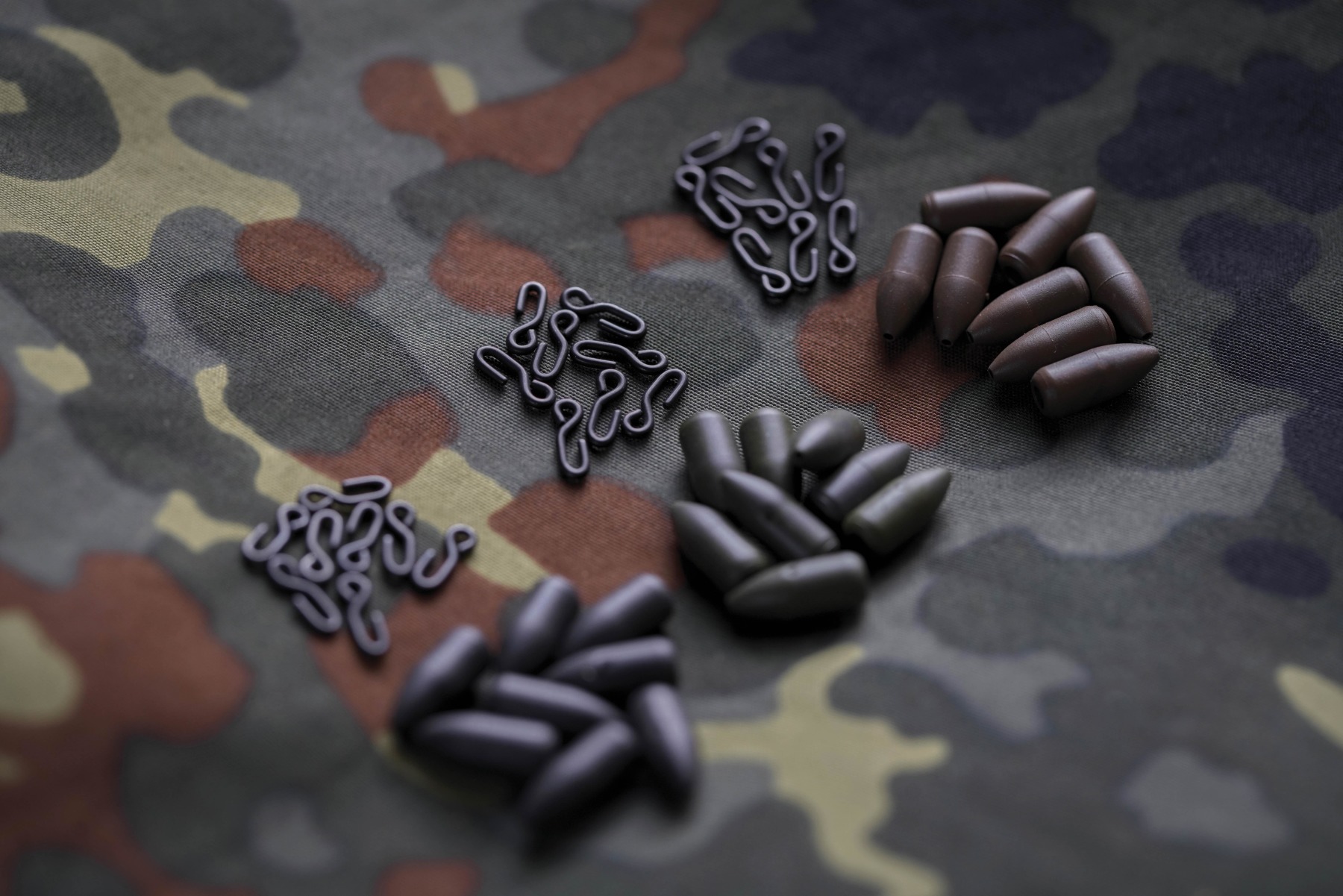
The Key Takeaways
So what have I learnt about rigs after spending years in the company of top anglers? I’ve learnt that rigs will always be a confusing topic, and for every example there is a counter-example. I can say only that things start to go wrong when you go to the extreme, and that generally, a good rig to suit a lakebed, one tied with an average-sized hook is all you need.
Do Terry Hearn, Darrell Peck or Kev Hewitt lose sleep over rigs? I don’t think so. I think those who might feel lost should remember that the list of well-known, accomplished anglers who use a maximum, size 6 hook, in a pattern that’s sharp straight out of the packet, is absolutely huge. These days, most rigs have excellent hooking properties, so the aggression aspect is less of a problem. It is all about avoiding that heartbreaking moment when the line goes slack.
Many years ago, I thought I’d found my holy grail in the Method feeder, only to be cruelly shot down. Will I get shot down with the Ronnie? Maybe. Nothing is perfect, but for now, this set-up is as far as I can take things, and it allows me to focus on the important aspects of my fishing, like putting myself, and a good bait, in front of the carp on the right day.





